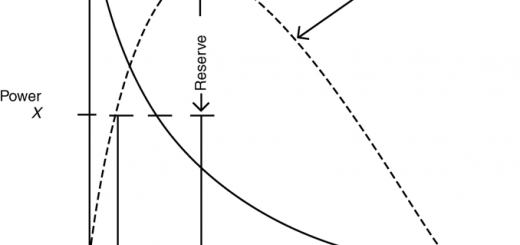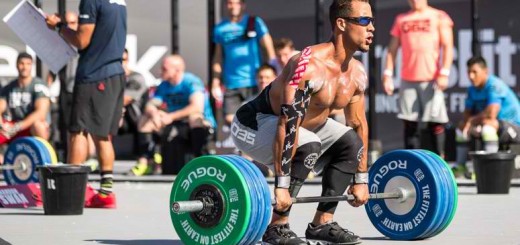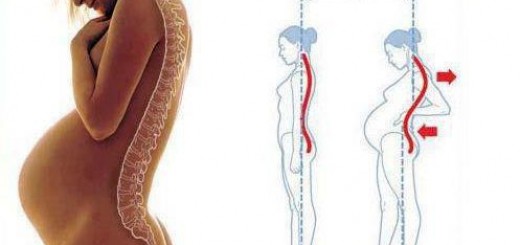
I’ve been a distance runner for the better part of my adult life and always loved the therapeutic release it would give me on a daily basis. I could throw on my shoes, head out the door, enjoy the sun or trudge through the rain, work up a good sweat and then head home. This was a routine for me for quite a few years. However, as winter started rearing its ugly head, I found myselfrunning less and less until not at all. Not until the first buds on the trees were sprouting would I lace up my shoes and head out for a run again. So I decided this year I was going to try something different: insert CrossFit here.
Not only was I doing a daily WOD, but I was also running fartleks, hill repeats and up to 8 miles per run. I knew I was over-taxing my body, but I felt healthy and was pain-free.
A little of my background as an athlete: I was an elite gymnast for many years growing up, and so most of the traditional pull-ups, sit-ups, box jumps, handstand push-ups, and other bodyweight movements were already familiar to my body. Though I had not been keeping up with my gymnastics conditioning for the 9+ years after I quit, the body mechanics were still fresh in my memory. I was really excited when I went to my first CrossFit class and returned home feeling awesome. My first class also happened to be four months into my training for a half marathon. Not only was I doing a daily WOD, but I was also running fartleks, hill repeats and up to 8 miles per run. I knew I wasover-taxing my body, but I felt healthy and was pain-free.
The weekend before my race, I went to a regular class and did 24″ box jumps, followed by 12″ jump and touches, handstand push-ups and dead lifts. It was a ton of stress to put on one small part of the body, but I felt great! Home I went, showered, and went about my day as usual. It wasn’t until the following morning that my Achilles started feeling a little tight. I laced up my minimal shoes and headed to CrossFit class; I was sure that this was nothing more than the usual soreness after a hard workout. But when I took my first step on the warm-up run, I realized something wasn’t right: I couldn’t keep my cadence, and I couldn’t complete a full heel-to-toe transfer.
I should have stopped and started my resting right then, but like most endurance athletes, I thought I would just keep my running to a minimum and focus on the other areas of strengthening in order to be ready for my race. BAD IDEA!
To no surprise, my Achilles were still very tight. I jumped in place, did some calf raisers, ran up and down the block multiple times — thinking all I needed to do was warm up my muscles. But nothing was getting better.
I did my usual CrossFit classes throughout that week and rested all day Friday, and I prayed that would be enough to wake up Saturday ready to go. Saturday morning rolled around — 20 degrees out and sunny — so I started a little warm-up. To no surprise, my Achilles were still very tight. I jumped in place, did some calf raisers, ran up and down the block multiple times — thinking all I needed to do was warm up my muscles. But nothing was getting better. I thought to myself, I’ll run the first mile, see how it feels, and turn around if I need to. The first mile came and went: I was in pain, but could still move. I figured 12 more miles couldn’t hurt any worse. Wrong. As the miles increased, so did my pain, and my mobilitydrastically decreased. My gait had never been so inefficient: I was averaging 9-minute miles (I had previously been holding a solid 7:30 pace). I was on the verge of crying with each step. Thankfully, there was a 10-mile finish, so when that crept up, I veered off and accepted my 10-mile finisher medal.
My Achilles and the outside bottom of my feet were throbbing and swollen. I found frozen peas and raspberries in the freezer, placed them on my feet, and tried to sleep. When I woke up in the morning, walking was not a body mechanic I possessed any longer.
I met up with my boyfriend (who is also very invested in the CrossFit community) at the end of the race and walked to the car. Trying to be a big girl and suck up the pain, I also agreed to go shopping downtown in the city. Eventually, the pain got the best of me, tears started filling my eyes, and I raised the white flag. I was done. We finally got home and I immediately lay down. My Achilles and the outside bottom of my feet were throbbing and swollen. I found frozen peas and raspberries in the freezer, placed them on my feet, and tried to sleep. When I woke up in the morning, walking was not a body mechanic I possessed any longer. Every step felt like my Achilles was ripping further and further. I found a way to get around if I needed to by walking on my tip toes. Why did this work? When you take a regular step, the flexion of your foot elongates the Achilles when your heel comes in contact with the ground, and then shortens when you roll through to the ball of your foot. This is a lot of movement, especially for an area that is inflamed and possibly torn.
The Road to Recovery

That day, and into the night, I started reading — mainly to avoid going to the doctor. One of the best articles was from Tabata Times about Achilles tendinitis/tendinosis. I was relating to absolutely everything I was reading. So I continued my research, and with a minor background in kinesiology, I was able to construct a path to healing. The following are tools I used based on my personal experience and may help with your healing process as well.
Resting is usually the hardest part for most athletes. It’s a common misconception that resting means no exercise… As long as you are not aggravating the area being healed, you can still get a decent workout in.
First, I started with RICE – rest, ice, compression, elevation. Resting is usually the hardest part for most athletes. It’s a common misconception that resting means no exercise. Not true. As long as you are not aggravating the area being healed, you can still get a decent workout in. For me, it was a lot of biking, core strengthening and upper body strengthening, but NO lifting, NO rowing, and obviously nothing along the lines of running or jumping. I continued this “resting” for 3-4 weeks. I also made sure to set aside time every day to stretch my Achilles and do four sets of 25 slow calf raisers off a stair to start strengthening.

Icing was the easy part since it felt good to numb the area. I would ice 15 minutes at a time, three to four times a day. I also took 600mg of Advil to help with the inflammation. I did have to take caution in trying to walk directly following icing. It was best for me to keep my feet elevated after icing for an additional 10-15 minutes.
For both Achilles and plantar fascia issues, it’s important to promote healing in the correct position. You don’t want your Achilles and fascia to heal in a shortened manner, because the next morning you will feel the pain of those tendons rigorously stretching, and potentially causing more injury.
At night it was a double whammy of compression and immobilization. I used a traditional Ace bandage wrap to offer a soft compression on my entire ankle throughout the night while I slept. I also purchased two Strassburg socksto keep my feet in a flexed position. For both Achilles and plantar fascia issues, it’s important to promote healing in the correct position. You don’t want your Achilles and fascia to heal in a shortened manner, because the next morning you will feel the pain of those tendons rigorously stretching, and potentially causing more injury. I continued sleeping with the socks for roughly three weeks, until I could walk completely pain-free and wake up with no soreness.
After all, 4-6 weeks of slow healing is better than 40-60 years of chronic pain.
I am still very conscious as to not aggravate my Achilles and continue to include calf stretches and raisers in my daily routine. Box jumps — the main root of my issues — are slowly being worked into my workouts, but jump rope, running and rowing are a common part of my training again. For box jumps, I used to rebound from the ground for efficiency, but I have found it to be less stressful if I rebound on the top, while still keeping similar times. The most important aspect of my healing process was the listening part. I listened to outside resources, I listened to (read) numerous articles and theories, and I listened to my body. I used the tools that I fully understood the reasoning behind and took it slowly. After all, 4-6 weeks of slow healing is better than 40-60 years of chronic pain.
Original Article by: LAUREN BEYERS at TabataTimes










